Thirty paintings go missing from Tehran municipal museum

A member of Tehran’s City Council has revealed that 30 priceless paintings loaned from Imam Ali Religious Arts Museum have disappeared.

A member of Tehran’s City Council has revealed that 30 priceless paintings loaned from Imam Ali Religious Arts Museum have disappeared.
Nasser Amani has estimated the value of just one of the paintings at around 300 billion rials (approximately $500,000).
The announcement came during a session of Tehran's City Council, where Amani emphasized the council’s legal duty to oversee municipal assets. He revealed that the artworks were lent to an unidentified entity outside the municipality with official documentation, allegedly for an exhibition that never took place. Despite repeated inquiries, there has been no clear explanation or response from the authorities responsible.
“We’ve tried to follow up on this, but not only have we not received a report, but no one has provided a clear answer about where the valuable artworks are,” Amani said during the session. His comments reflect the frustration within Iran over the negligence and corruption that seems to plague the management of the country's cultural heritage.
This latest incident is part of a pattern involving the misappropriation of Iran’s historical and artistic treasures under the Islamic Republic. Earlier scandals include the theft of 48 handwoven carpets from the Sa’dabad Palace between 2013 and 2016. The carpets, considered national treasures, were reportedly moved to a private residence in a pickup truck, according to eyewitness accounts.
As more instances of missing or mishandled cultural assets emerge, critics argue that the Iranian government’s incompetence, corruption, and indifference are allowing the nation’s heritage to disappear.
Some have accused the government of deliberately neglecting cultural property, with suspicions that officials might be profiting from the "disappearances" through illicit sales on the black market.
The lack of transparency in the handling of the assets further complicates matters. As in the case of the Imam Ali Religious Arts Museum, government officials remain tight-lipped, providing little to no explanation for the missing artworks.
The latest scandal comes at a time when Iran’s cultural institutions are already under immense strain. Years of economic sanctions, political instability, and internal mismanagement have left many of the country’s museums and historical sites in disrepair.
Earlier this year, Iran International published a leaked letter obtained by the hacking group Black Reward, revealing that gold coins confiscated by the government following the 1979 Revolution from Imam Sadiq University are still unaccounted for.
While the Iranian government continues to tout its economic and military initiatives, many argue that it has neglected its responsibility to safeguard the nation’s cultural and historical heritage.
Cultural activists are now demanding an investigation into the missing paintings and a full accounting of Iran’s lost cultural treasures.
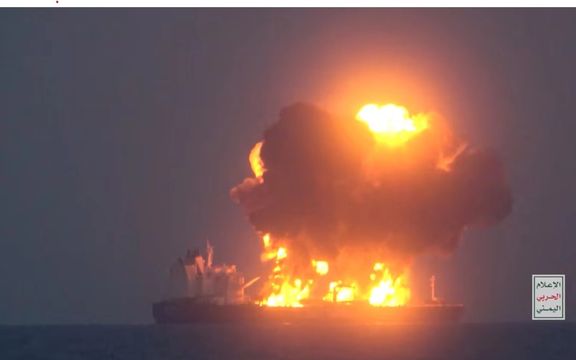
A senior member of the Saudi royal family has accused Iran of breaching the terms of the 2023 agreement to resume ties as it continues to arm and fund armed militant groups in the region.
Turki al-Faisal, a former Saudi intelligence chief, said the West must also do more to deter the Iran-backed Houthi terror group in Yemen amidst the Red Sea blockade as the group holds the world "hostage".
Houthis began attacking international shipping in the Red Sea region last fall after Iran's Supreme Leader Ali Khamenei called for blockading Israel. They have expanded their reach far beyond Yemen disrupting a key global trade route.
Speaking at Chatham House in London, al-Faisal said on Friday: “The Houthis now hold the world as hostage in the Bab al-Mandab entrance to the Red Sea, and yet Iran is not showing that it can do something there if it wanted to, and the kingdom would have expected Iran to be more forthcoming in showing not just to us but to others that it can be a positive factor in securing stability and removing differences not just with Saudi Arabia but the rest of us.”

Dozens of projectiles have been fired at commercial vessels and dozens of hostages taken amid the blockade initially aimed at forcing an Israeli ceasefire in Gaza.
Iran also continues to destabilize countries including Syria, Lebanon and Iraq, which al-Faisal said had broken the terms of the 2023 agreement.
However, according to the UK's The Guardian, al-Faisal has said that the West's "pinprick bombings" carried out by the UK and US on Houthi infrastructure, is not enough to quash the group, armed, funded and trained by Iran.
In a frank admission, al-Faisal said the kingdom is disappointed in Iran's having broken its promise to limit the influence of its terror groups in the region, agreed upon last year when the two countries resumed diplomatic relations after several years' hiatus.
During the session at Chatham House, he said more must be done by the global community to combat the Red Sea blockade which began in November.
“We have seen the deployment of European and US fleets along the Red Sea coast and more can be done there to interdict the supply of weaponry that comes to the Houthis from Iran,” he said.
“Putting pressure on Iran by the world community can have a positive impact on what the Houthis can do in launching these missiles and drones to hit international commerce.”
On Sunday, a missile penetrated Israel's air defence systems, threatening once again, to inflame tensions amidst the war in Gaza which has seen Iran's proxies in the region surround Israel since the Hamas invasion of the Jewish state on October 7.
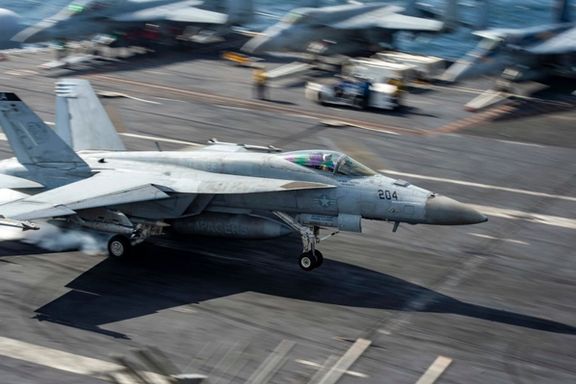
A former Royal Navy Commander told Iran International’s podcast Eye for Iran that Iran is winning against the Americans in the Red Sea, through their proxy the Houthis.
Tom Sharpe, who worked alongside the Americans in the Red Sea for two decades, witnessed their might as the most powerful navy in the world but in spite of that, under the tutelage of Iran, the Houthis have not been deterred by the limited US defensive and allied retaliatory actions.
“They're achieving their ends, all of them, and we're achieving none of ours. We're spending millions and millions of dollars on not winning. It's a real problem," he warned.
Critics say the US's risk aversion has meant that just like its kid gloves approach to Iran, the deterrence to its terror groups such as the Houthis is failing.
Rear Adm. Marc Miguez, a US Navy commander from the Dwight D Eisenhower Carrier Strike Group, told Ward Carroll's YouTube episode that more aggressive strikes on the Houthis were necessary.
"There are definite strategies that were put forward, but our National Command Authority decided that those - I would call more aggressive postures and more aggressive strikes - was not something we wanted to challenge," Miguez said last month.
Jason Brodsky, the policy director for United Against Nuclear Iran (UANI), agreed that the Biden administration's inability to deter Iran has led to an emboldened stance not only from the Islamic Republic but also, its proxies.
“We have a deterrence deficit with Iran. They have been attacking our forces. They have been attacking commercial vessels, with impunity since October 2023,” he said.
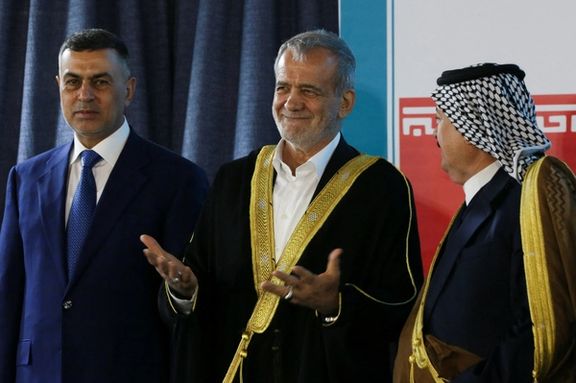
Touted as a diplomatic breakthrough, Iranian President's first trip to Iraq last week aimed high on economics and security but seemed to hit more roadblocks than milestones.
Masoud Pezeshkian’s visit to Baghdad was steeped in high expectations, underscored by the announcement that over a dozen agreements were signed with Iraq. Yet, behind the fanfare, sources close to the negotiations revealed to Iran International that the economic objectives of the visit largely fell short.
Despite signing 14 memoranda of understanding, which signal some consensus on several fronts, the absence of concrete cooperation agreements and joint statements suggested a lack of substantive progress.
A critical point of contention emerged during Pezeshkian's meeting with Iraqi Foreign Minister Fuad Hussein. Informed sources disclosed that Pezeshkian proposed settling Iraq's substantial debt to Tehran through a joint currency mechanism, modeled after the Russia-Iraq financial arrangement.
However, the proposal was met with firm resistance from the Iraqi side, with Hussein arguing that such an approach could destabilize the value of the Iraqi dinar. The meeting, which extended 40 minutes beyond its scheduled time, reflected the broader challenges Pezeshkian faces in navigating Iraq's cautious stance toward Iran's economic overtures.
Iran’s economic relationship with Iraq has long been fraught with challenges, primarily stemming from the complex interplay of sanctions and regional politics. Iran exports critical resources such as natural gas and electricity to Iraq, making it a significant energy supplier to its neighbor. According to Iranian domestic media, Iraq ranks as the second-largest destination for Iranian exports after China, with bilateral trade currently valued at approximately $12 billion.
Since 2018, US banking sanctions have complicated Iraq's ability to settle debts with Iran, despite routine waivers under both the Trump and Biden administrations permitting energy imports. The exact amount owed by Iraq remains unclear, with conflicting reports on its settlement status.
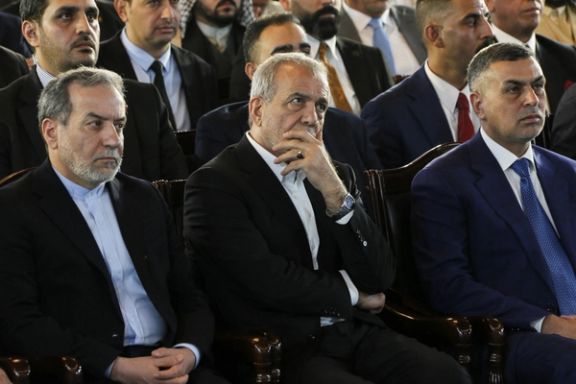
Unfulfilled promises and divergent visions
Pezeshkian's broader vision of fostering regional unity through the removal of borders between Islamic countries, analogous to the European Union's Schengen Agreement, found little traction among Iraqi leaders.
His call for a borderless Islamic bloc, first proposed in a meeting with the Iraqi President and later reiterated in public speeches, was met with a lukewarm response at best. The Iraqi leadership, probably wary of Iran's expansive regional ambitions, showed little enthusiasm for a concept that would likely diminish their sovereignty and complicate Iraq's delicate balancing act between competing regional powers.
The lack of a joint statement at the conclusion of Pezeshkian’s visit further underscored the disconnect between the two nations. Typically a symbolic gesture of diplomatic alignment, the absence of such a communiqué hinted at underlying tensions.
Security concerns and engagement with Kurdish leaders
While economic objectives dominated the official narrative of Pezeshkian's visit, security considerations were equally pivotal, particularly in relation to Iraq's autonomous Kurdistan region.
Pezeshkian’s personal touch, including his ability to converse in Kurdish and shared cultural ties, played a notable role in easing some of the tension that had been inflamed by recent IRGC military actions against Kurdish groups.
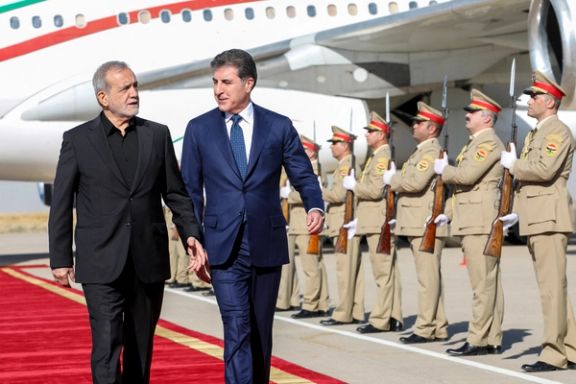
Pezeshkian's engagements with Kurdistan’s Prime Minister Masrour Barzani and veteran Kurdish leader Masoud Barzani underscored a strategic attempt to mitigate long-standing political misunderstandings and foster a more cooperative relationship. However, this softening of ties appeared to rely heavily on Pezeshkian’s personal rapport rather than a concrete shift in policy or security strategy.
While Pezeshkian’s personal diplomacy may have momentarily eased tensions with Kurdish leaders, the broader objectives of his visit, to secure economic gains and bolster regional influence, remain unfulfilled, casting a reflective light on the nuanced and often challenging path ahead for Iran's new administration on the international stage.

Iranian Nobel Peace Prize laureate Narges Mohammadi on Sunday urged the United Nations to criminalize gender apartheid, in a message from prison on the second anniversary of Iran's 'Woman, Life Freedom' movement.
The protests erupted after Mahsa Amini, a 22-year-old Kurdish-Iranian woman, died in the custody of Iran's so-called "morality police" on September 16, 2022. She had been arrested in Tehran for allegedly violating the country's mandatory hijab law. Her death, which came amid allegations of police brutality, ignited months of nationwide protests in Iran, led predominantly by women and young people demanding greater rights and freedoms.
"The 'Woman, Life, Freedom' movement has redefined the people's role in confronting tyrannical rule, imposing a new understanding that instills fear within this theocratic regime," Mohammadi said in her letter from Evin Prison.
On the second anniversary of the “Woman, Life, Freedom” movement, Mohammadi's letter said, "we reaffirm our commitment to achieving democracy, freedom, and equality and to defeating theocratic despotism."
The Iranian Nobel Peace Prize laureate's letter was published shortly after thirty-four women prisoners including Mohammadi went on hunger strike in Evin Prison to mark two years since protests erupted in 2022.
In her Sunday letter, Mohammadi urged the United Nations "to end its silence and inaction in the face of the devastating oppression and discrimination by theocratic and authoritarian governments against women by criminalizing gender apartheid."
"The liberation of women from the grip of oppression and discrimination is essential for empowering the force that drives peace and democracy," she said.
The concept of gender apartheid emerged from Afghan women's human rights defenders in response to the Taliban's suppression of women's rights in the 1990s.
However, Iranian activists have been joining the campaign after widespread protests against compulsory hijab laws which have seen brutal crackdowns by morality police, including the deaths of women including Mahsa Amini.
Women such as Iranian-American dissident activist Masih Alinejad, have played a pivotal role in amplifying and broadening the campaign's reach. She has been the subject of multiple assassination attempts abroad by the regime as it continues to target dissidents both at home and on foreign soil.
In June, human rights group Amnesty International joined a campaign against gender apartheid amid continued nationwide oppression in Iran and Afghanistan. The group says it aims to strengthen efforts against “institutionalized regimes of systematic oppression and domination imposed on the grounds of gender.”
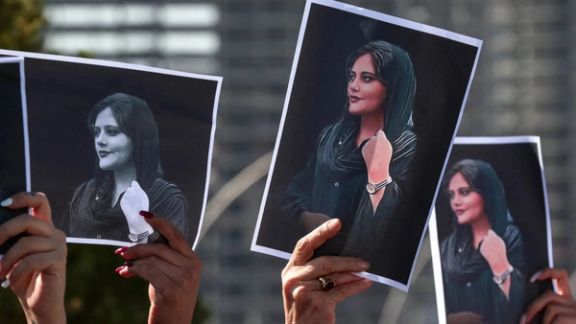
In a show of global solidarity, Iranians staged protest rallies across cities in Europe and Australia on Sunday, as communities in the United States also planned their own gatherings in different cities.
These protests mark the second anniversary of Mahsa Amini's tragic death in police custody, which sparked the 2022 “Woman, Life, Freedom” uprising in Iran.
Mahsa Amini, a 22-year-old Kurdish-Iranian woman, died after receiving fatal injuries in the custody of Iran's so-called "morality police" on September 16, 2022. She had been arrested in Tehran for allegedly violating the country's mandatory hijab law. Her death, which came amid allegations of police brutality, ignited months of nationwide protests in Iran, led predominantly by women and young people demanding greater rights and freedoms. The protests rapidly spread across the country, calling for the end of mandatory hijab laws and the broader Islamic Republic system.
Sunday's protests serve as both a tribute to Amini and a continuation of the calls for justice that arose from her death. Demonstrators gathered in major European cities, including Berlin, Paris, Hamburg, and the Hague to name a few. They carried photos of Amini, raised banners that read “Woman, Life, Freedom,” and chanted slogans against Islamic Republic, condemning its repressive tactics and ongoing human rights abuses. Protests were also held in London and Sydney, Australia.
Protesters filled the streets, waving the lion and sun pre-Islamic Republic national flag and calling for governments to increase pressure on Tehran. Protestors also demanded from International leaders to list Iran's Revolutionary Guards (IRGC) as a terrorist entity in Europe, United Kingdom and Australia.
Similar global rallies were held on Saturday ahead of Amini's anniversary.
Meanwhile in Iran, strikes were held across at least 11 cities in Western Azarbaijan and Kurdistan provinces.
Security forces banned Amini's family from leaving their home to visit her burial site on her anniversary, and threatened them with arrest.
There was heavy security in many cities in western Iran to prevent any street gatherings. The government arrested 22,000 people during the protests after Mini's death and executed several young men who had taken part in the street rallies in 2022.
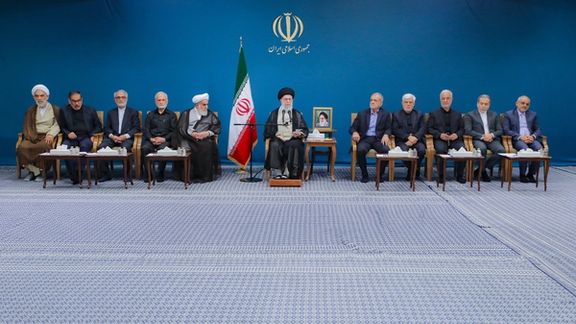
Despite the powerful protests from 2017 to the 2022 Mahsa uprising, Iran's political landscape remains intensely debated as analysts and opposition groups seek to understand why the Islamic Republic does not fall.
The Mahsa Movement, despite its achievements and shortcomings, prompts a critical examination of the regime’s resilience. It is essential to understand why a transition to a new political system has not occurred, given the movement’s strong intentions and broad domestic and international support. The persistence of authoritarian regimes like Iran's and their ability to maintain power has become a key topic of discussion among political experts and activists in recent decades.
Understanding the new generation of authoritarians
To grasp the Islamic Republic’s durability, it is essential to understand the new generation of authoritarian leaders and regimes.
Emerging in the latter half of the 20th century, these regimes differ markedly from classic dictatorships, totalitarian states, and monarchies. They lack overtly undemocratic structures but do not operate with the transparency and popular consent of genuine democracies. Many regimes worldwide—spanning Latin America, Eastern Europe, North Africa, and the Middle East—fall somewhere between democracy and dictatorship. This is why it should come as no surprise that both Ruhollah Khomeini and Ali Khamenei, the previous and current leaders of the Islamic Republic, despite their fundamentalist, totalitarian discourse, often speak highly of democracy in their speeches.
These regimes adopt techniques and institutions from both democratic and authoritarian systems to consolidate power. By maintaining a veneer of legitimacy through engineered elections and limited power rotation among loyal elites, they present a facade of democracy. In Iran, this facade fosters some hope for reform while discouraging outright revolution. Understanding this arrangement is crucial when discussing how to challenge and confront such regimes.
The leaders’ strategies in this type of states range from overt violence, such as repression, imprisonment, and torture, to more subtle measures like election manipulation, media propaganda, and the distribution of political and economic favors.
This is why, in the Islamic Republic, we see both the killing of 1,500 people within a week during the 2019 protest crackdown and, five years later, a presidential election billed as a reformist move by the top ruler. It is a striking and paradoxical blend of state-managed ballot boxes and batons versus the society.
Political engineering: Crafting legitimacy
A key factor in the survival of these political systems is their use of clientelism to cultivate loyalist forces. This strategy has evolved from simply offering money or government positions to providing economic privileges, licenses, and various favors. In such a patrimonial system, the state machinery and public resources are seen as the ruler’s personal assets used to manage and control society.
In this environment, informal relationships often override formal laws and regulations, shaping political norms and behaviors. This leads to a persistent absence of the rule of law and reinforces authoritarianism, where economic corruption and political repression become essential for the regime's survival.
In modern authoritarian regimes, loyalist forces have become more complex and insidious. They often blend into society, masquerading as ordinary citizens, dissidents, or protesters, which undermines efforts to mobilize societal pressure and complicates political opposition.
The Islamic Republic: A unique system
After a tumultuous decade in the 1980s, the Islamic Republic has spent the following decades institutionalizing a modern authoritarian Islamic state. It has skillfully built a vast network of loyalist forces across political, social, and economic spheres.
This network is maintained through hundreds of religious organizations, cultural foundations, paramilitary groups, state institutions, and other entities. Loyalist forces fall into two categories: those with formal roles, such as military personnel and clerics, and those with covert functions, such as pro-government activists and economic oligarchs. These forces support the regime by suppressing protests during unrest and advancing government interests during quieter periods, often at the expense of independent groups.
Sowing division through loyalist groups
The Islamic Republic has long utilized loyalist groups to create societal divisions. Even during reformist periods, such as President Mohammad Khatami’s tenure (1997-2005), the regime expanded its network of loyalist civil society groups, including religious, cultural, and charitable NGOs. Financially and politically dependent on the government, these groups have often opposed protest tactics and sought to undermine genuine opposition efforts. This "divide and rule" strategy has been a cornerstone of the regime’s survival.
For example, during recent parliamentary and presidential elections, opposition calls for boycotts were actively countered by regime-aligned ‘reformists’ and their affiliates. Despite these efforts, loyalists failed to meet the regime’s goals, with voter turnout in all elections over the past five years remaining below 50 percent.
Loyalist groups within religious and ideological institutions—such as Islamic seminaries, mosques, and religious organizations—aid the regime in maintaining ideological control over society. Additionally, economic organizations play a key role in sustaining loyalty by providing financial and professional rewards to align activists with government interests.
Investment in military and bureaucracy
Understanding the complex government-society structure raises a critical question: How do loyalist forces contribute to the regime's preservation?
The Islamic Republic’s survival relies heavily on its military and security apparatus, which protect the regime, and the economic dependence of millions of Iranians on state wages and benefits. This economic entanglement severely hampers revolutionary efforts and limits opposition support.
Dr. Abel Escriba-Folch, a political scientist at Pompeu Fabra University, highlighted in an interview with Iran International that Iran’s military personnel make up over 2.2% of the workforce, significantly higher than the global average of 0.8%. This underscores the regime’s heavy reliance on its security apparatus for societal control.
While the military plays a crucial role, the state machinery is highly effective in sustaining authoritarianism. Escriba-Folch notes that the state's power is a formidable tool of authoritarianism, with government institutions excelling in tasks such as coercing rivals, extracting revenue, managing citizen registration, and fostering dependency. This effectiveness enhances the durability of authoritarianism in ways unmatched by other institutions.
The professor explains that the dependence of a large segment of society on state-provided salaries, financial aid, and other benefits diminishes their motivation and capacity to challenge the state.
Preventive and Reactive Repression
Regime preservation and repression extend beyond periods of unrest. The Islamic Republic employs its network of religious, administrative, political, cultural, and economic institutions to sustain its legitimacy and effectiveness.
In this area, Dr. Escriba-Folch distinguishes between preventive repression, which aims to thwart opposition organization, and reactive repression, which addresses protests after they occur. Both forms of repression involve the state’s bureaucratic apparatus and security machinery.
Government employees and the large bureaucracy act as tools of preventive repression by maintaining the network of loyalists.
Escriba-Folch highlights that digital technologies have enhanced the state bureaucracy’s ability to monitor and control the population, further entrenching its power. The regime uses extensive administrative systems and advanced communication technologies to oversee various aspects of citizens' lives, from salaries and assets to daily transactions and cultural activities, aiming to adjust these elements to ensure societal compliance.
The trigger for change
Professor Francesco Cavatorta of Laval University refers to the role of crises, such as the death of a leader, in shaping transition agreements in some Latin American countries or leading to regime changes in others.
However, when discussing the potential death of a dictator in Iran, Cavatorta points out that the Islamic Republic has already navigated the death of its leader once before. He remarks, "I am confident that the Iranian regime believes that since we’ve managed this situation once before, we can overcome it again [the death of Khamenei]."
Over the past 35 years, however, both the Islamic government and Iranian society have undergone significant changes. The regime has lost much of its legitimacy, while the population has experienced the power of protest.
Winning over loyalists: A path to change
On the second anniversary of Mahsa-Jina Amini’s death, which sparked the 2022 protests, opposition groups must address the segment of society dependent on the government—about 8 million people, or 10% of the population.
Dr. Escriba-Folch argues that as the government’s administrative and military apparatus grows, increasing economic dependence on the state weakens the public’s willingness to challenge it. This dependence stifles revolutionary momentum and complicates organizing opposition.
Professor Cavatorta suggests that real political change in authoritarian regimes occurs when moderates from both the regime and opposition engage in dialogue. He emphasizes the importance of prominent figures and civil leaders in shaping transition agreements. However, the mass exile of opposition figures and intellectuals in recent decades complicates this process, making it harder to bridge the divide.
Whether through violent revolution or peaceful reform, the entrenched network of loyalist forces, clientelism, and economic dependence presents substantial challenges to those seeking change. Understanding these dynamics is crucial for devising effective strategies to confront and overcome the regime’s entrenched power.